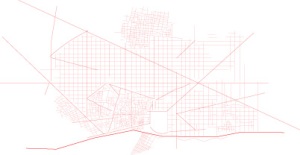Objectives
Program Director, Philip Speranza
psperanza@speranzaarchitecture.com
Summary Objectives
In the year 2000 the city government of Barcelona conceived of an information activities district, similar to Silicon Valley, placing it in the underutilized post-industrial neighborhood of Poblenou. Called 22@, its dual purpose is to diversify the city’s business activities, double local residential density and enhance the cultural identity of Poblenou. Unlike the tabula rasa top-down urban planning of the Olympic Village in 1992 that demolished large expanses of the city, the block by block bottom-up planning of 22@ protects the small and medium sized historic industrial fabric as a means of using that urban fabric as a connectivity between blocks. Can this existing and proposed materiality related to place and cultural events be used to connect a district, neighborhoods and urban spaces? The investigation relating urban design and neighborhood identity will provide an opportunity for design students to understand how this theory operates in Barcelona and bring these societal ideas of community accessibility back to their communities. Students will benefit from minimum three hour sessions both mornings and afternoons with additional discussion at group lunches.
Part I: Students will research three principle periods of existing urban typology in Barcelona and a comparative study:
1. maritime metropolis; 2. modernism; 3. contemporary pluralism after the 1992 Olympics and 4) Granada, Andalusian culture and urbanism. Students use field books for daily in-situ urban design diagrams at the scale of the district, neighborhood and urban room, reading discussions, media workshops and office visits and develop an understanding and identify the problems of the 22@ district in their own terms.
Part II: Students define a neighborhood as a network of urban rooms in the 22@ district and link them through both existing and proposed material identity to create connectivity between autonomously designed blocks. These projects provide an opportunity for each student to demonstrate their cumulative knowledge and provide an open ended design solution to the problem they defined in Part I to respond to the question of whether a cultural materiality can provided a connective tissue for a district. Can 22@ workers and residents be integrated into a community with this urban design typology?
Normal program time will be from 10am-6pm (lunch 1-3pm). Voluntary participation in evening events after normal course hours will periodically be made available. Occasional earlier start times will be required and announced in advance.
Included in program fee:
– Lodging accommodation in a private apartment in double rooms
– Airfare from Barcelona to Granada
– Lodging accommodation for Granada in a hotel, in double rooms
– Bono-ticket cultural destination entrances in Granada
– Transfer transportation from airports to accommodations
– Travel health insurance
Not included in program fee:
– Meals at lunch and dinner
– Public transportation within Barcelona, inter-city rail transportation to Catalan cities and museum entrance fees
– Any additional fees for missing airline departure times, additional baggage charges, and other penalties
– Tuition cost for course credit to the New Jersey Institute of Technology



